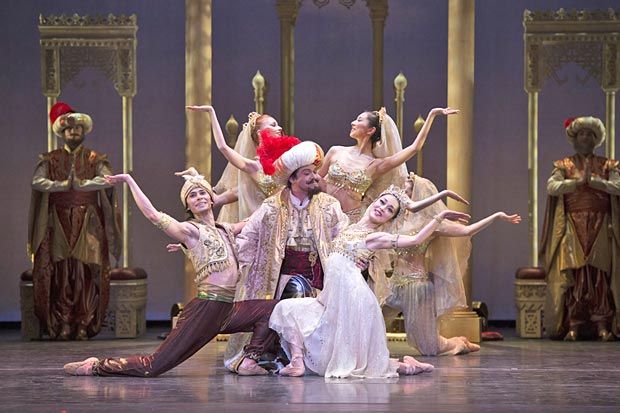
© Bill Cooper. (Click image for larger version)
Birmingham Royal Ballet
Aladdin
London, Coliseum
20 Mar 2013
www.brb.org.uk
BRB Aladdin page
BRB have already toured their new production of Aladdin extensively round the UK this season. Now they bring it to the Coliseum. The work was originally made by David Bintley, BRB’s Artistic Director, for a Japanese company five years ago. Now staged for his own company, it has new designs to fit the UK’s smaller stages.
Bintley sets out his stall very clearly in the programme notes. Aladdin is “the least ‘deep’ ballet I have ever made…a ballet that does what is says on the tin. It tells the story”. He does rather set your expectations almost defiantly low here. Don’t expect big emotional highs and lows or deeply defined characters, just a clear narration of a story that everyone knows. So if we judge it on these terms how does it do?
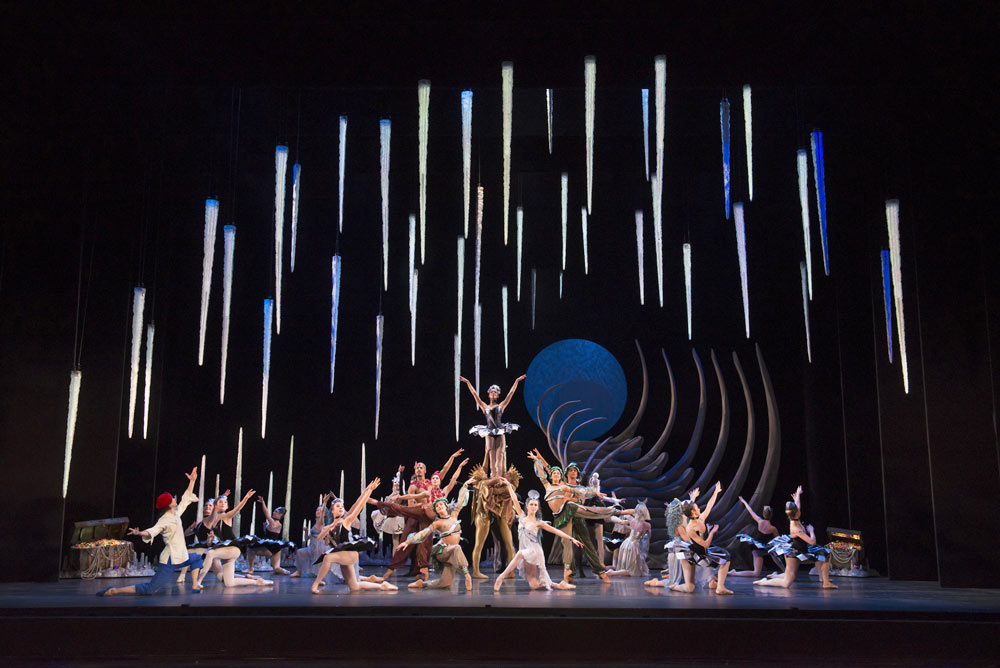
© Bill Cooper. (Click image for larger version)
Plus points must start with the gorgeous designs in eye-popping colours (sets by Dick Bird) and attractive costumes (Sue Blane). We move from a cave of riches/jewels in the first act, where the stalactites and stalagmites change colour to match the jewels that are dancing, to a dreamingly gorgeous bathhouse (with real water in the fountain) for the Princess in the second, ravishingly lit by Mark Jonathan. There are cleverly-judged special effects for the appearance of the Djinn from the lamp and a neatly-done flying carpet.
The storytelling is clear and easy to follow, and packed with dancing episodes. There is fine dancing from the two leads. César Morales is cheerfully tireless as Aladdin. Nao Sakuma always looks refined and elegant as Princess Badr al-Budur, working her way through countless costume changes. Tzu-Chao Chou has a fine time of it spinning and leaping as the blue-skinned The Djinn of the lamp. All of these characters are very lightly sketched: Sakuma is just required to look beautiful, which indeed she does. We know it’s all just a story: nothing ever seems at stake. We never worry that Aladdin will in fact get his head cut off by the Sultan’s guards. There is no dramatic tension. Iain Mackay as the evil Mahgrib (another fabulous costume, but not much dancing) does his best to bite the scenery and is rewarded with some panto-style booing at the curtain calls.

The first act is packed with divertissements for the jewels Aladdin finds in the cave. (Though there was something odd about having this display in the first act, it felt rather more like the kind of material you might expect in the third). The audience particularly liked the Rubies couple, where a bare-chested Tyrone Singleton threw Ambra Vallo high in the air and wound her round him like a scarf. Natasha Oughtred had a warm and flirtatious stage presence as Sapphire.
In Act 2 Bintley gives us a touch of Busby Berkeley Hollywood-style glamour in the massed ranks of the Djinn’s blue and gold retinue. There a lot of dancing, an endless flow of steps, though after a while it does have a rather generic feel. The cast work hard. Bintley scores high on the productivity stakes but the quality control department may be undermanned.

© Bill Cooper. (Click image for larger version)
On the minus side must come the music. Carl Davis’s score sounds like film music, and a particularly forgettable film at that. Don’t expect to come out humming any tunes. Overall, it’s a colourful spectacle but with little emotional investment. The princess, though decorative, is a bit wet for most girls today to identify with. Marion Tait is possibly the finest and most subtle female character dancer in the UK’s ballet companies and it is a shame that Aladdin’s mother is painted as such a cliché: even she can’t make it the role more than a cartoon.
It may do what is says on the tin by way of sketching out a narrative, but that doesn’t mean it’s a satisfying overall experience. Bintley and BRB are both capable of much more fulfilling work than this.

© Bill Cooper. (Click image for larger version)
So why go for such a simplistic approach ? The justification for mounting what is intended as an uncomplicated crowd pleaser may be that BRB needs a big box office-friendly production to keep the cash coming in. However, the company already has a number of audience-friendly full length works in its repertoire, but which offer something more substantial. These include their very fine Nutcracker, Beauty and the Beast, and Bintley’s recent production of Cinderella (another beautifully designed work, but much more going for it than Aladdin in terms of music, dance and drama). BRB’s season concludes with Coppelia and Giselle. Triple bills seem to have shrunk drastically.
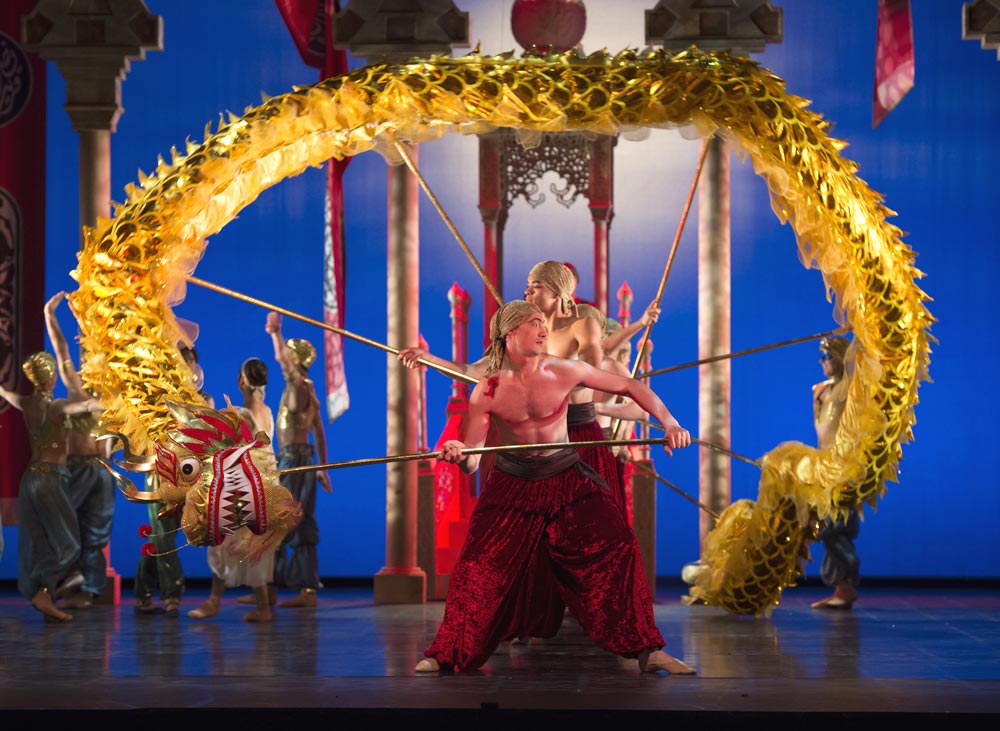
© Bill Cooper. (Click image for larger version)
The production has been funded by generous support from sponsors and BRB’s audience and is a co-production with Houston Ballet. This approach is very enterprising but it is a little sad that the thinking appears to be that what the public wants is something as slick and unchallenging as this. Despite its ostensible appeal, Aladdin doesn’t seem to be selling as well in London as must have been hoped. Yet down the road at the Opera House, Wheeldon’s Alice (a production initially viewed as somewhat shallow and over reliant on visual effects) is still packing them in. Working out how to achieve that exercises the minds of all the other UK ballet companies considerably, but no one seems to have cracked it yet.












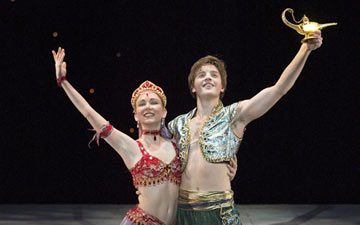

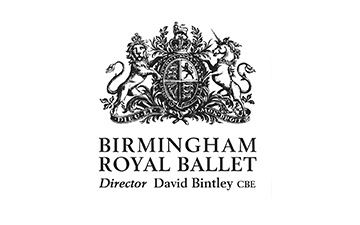

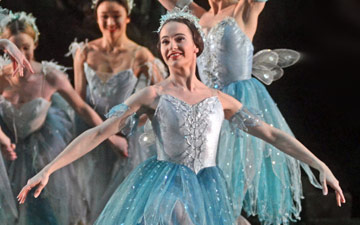
Pointless to criticise David Bintley’s Aladdin for what it is not. Shamelessly it is a piece of fun, a danced extravaganza of a familiar tale that I last saw as a panto, some 45 years ago.
There is – however – an element of seriousness that elevates Bintley’s ballet but I do wonder how clear the narrative is for first-timers, Birmingham Royal Ballet’s intended family audience. The motivation of Bintley’s mahgrib is unclear, as is Aladdin’s acquisition of the jewels in the subterranean cave – and why are we there anyway?
We are treated to a subterranean vision of the princess – but dramatic logic expects we next see more of the ballet’s heroine, not an extended display of aqueous jewels. We are denied princess as the diamond variation, crowning display of Aladdin’s jewel vision, which would have made the scene more dramatically cohesive.
Maureya Lebowitz is the real deal – as princess and ballerina. Beautifully expressive arms – shaming BRB’s women – with regal poise and gracious presence. She eclipsed the bland Mathias Dingman in the title role. The other characters are no more than dancing costumes – with no sense of character or narrative, apparently deliberately so according to Bintley.
Best as a series of the choreographer’s typically effective theatrical effects and danced diversions, Bintley’s flowing choreography will threaten nobody unfamiliar with ballet – but Aladdin suffers from a lack of dramatic propulsion. However brilliantly performed (dancers not credited) the lion dance is gratuitous but the cod-Schéhérazade ensemble reveals the company at its energetic best.
For adults there are plenty nods to other ballets, Ondine, Scènes de ballet, and the glorious pas de deux for Aladdin and the princess (Carl Davis’ score pulling at every heart string like the best schmaltzy romcom) is crocheted with quotations from The Dream, La Bayadère and Sleeping Beauty. Extracted and combined with the jewels scene, BRB would have a wonderful one-acter on its hands.
The sets by Dick Bird do their work wittily and economically – though framed in black the production looks lost on the wide stage of the London Coliseum. Sue Blane’s new costumes are shiny and sadly often unflattering: the ruby is got up in a Hilda Ogden headscarf, the dancing pearls are encrusted in places that bring Barbara Windsor’s assets to mind – and if you think that Ashton’s Scènes de ballet should be redesigned, the diamonds’ diamante costumes here should make you reconsider.
So – pointless to criticise Bintley for creating so polishedly what he set out to do. Even in the jewels divertissement, Bintley displays more theatrical warmth and flair than Balanchine did in his abstraction – which is entirely the point of company like BRB. Like Alice’s Adventures, currently sold out at Covent Garden, this is ballet as entertainment, ballet the West End Show.
But sad to see that audiences are not flocking to BRB’s current comfortable programming. A hint there that audiences want to be challenged more by the expressive powers of ballet?
I saw Aladdin in Birmingham and it has to be said that at the end of the (very) long first act, I was left absolutely cold. There was none of the emotion or feeling that is present in every other Bintley ballet I have seen (and I have seen every one since his residency started in Birmingham) and there were a number of issues with the dancing that really should have been avoided, as a principal Natasha Oughtred really should be able to pirouette without almost falling over. The standout performances were definitely Tyrone Singleton and Ambra Vallo but I had no emotional investment in Aladdin as a character. The second and third acts were better but still rather empty and Iain McKay was criminally wasted as the Mahgrib (as well as looking like he was an extra from Wicked, the green makeup was a touch de trop). As for the Emeralds costumes, the phrase “search and destroy” springs to mind. They managed to make the fabulous and svelte Delia Matthews and Callie Roberts look rather chunky and as for the swimming cap headpieces…
There was also the small issue of cultural confusion. Aladdin and his mother were both pitched as chinese, there was a chinese lion dance and dragon but the setting and costumes were middle East in inspiration. It was a ballet that hadn’t quite found where or what it wanted to be.
As for the issue of ticket sales compared to the Royal, it’s a bit like comparing apples and oranges. Whilst both fruit, that’s where the similarities end. Yes, the Royal sells out but that has less to do with the ballets they are performing or the quality of the dancing and more to do with the fact that it’s the Royal and they perform at the Opera House. People pay for the name and the kudos. Please don’t get me wrong, there are some wonderful dancers at the Royal but I have seen sold out ballets performed there which I would have thought had been performed by amateurs, the dancing was that bad. Alice in Wonderland has hardly been critically received in an entirely positive light and I have only managed to see half of the first act as the ridiculous sets and lighting managed to make me feel so sick I had to stop watching. Moreover, the media hugely raised the profile of Alice when it was originally produced with features in most papers as it was the first full length ballet the Royal had produced in 15 years. Th fact that BRB had created 4 or 5 in that period, despite having significantly less cash to work with, was completely ignored.
This trend has continued with the appointment of Kevin O’Hare whose management technique seems to be a direct parallel of David Bintley’s rather than that of Monica Mason and yet the fact that O’Hare danced exclusively with SWRB/BRB has been ignored in pretty much every profile that has been written about him. How much of that is the media’s slant and how much is O’Hare’s is anyone’s guess…
So please don’t try and compare a company that is prolifically creative, that takes ballet all over the country, from big theatres to some really small ones, to one that sits in state in London, never having to fight for tickets, safe in the knowledge that they can trade on their name. Because what the BRB lose in ticket sales they more than make up for in integrity.
I go to see splendid dancing. That’s what I got.
My own feeling re the audience not turning out is that Aladdin is seen very much as a Christmas/Pantomime story and we only recently finished with all that for last Christmas. It should do better toured before and after a Christmas.
In comparison Alice, although for families as well, is not associated with Christmas and hence works better at the moment. Although I don’t think either ballet is a knockout at all, Alice has fresher production thinking in it of course – it was a moving forward for RB in that respect (if not appreciated by all!). Aladdin is very traditional, if done well.
I’m pleased with what Kevin O’Hare is doing for the Royal Ballet but I think the comparison with Bintley is not so flattering for Bintley – O’Hare is commissioning a variety of choreographers at a variety of levels to do work for the company whereas David spends most of the BRB new work budget on himself. I think it better if choreographing directors follow the Helgi Tomasson model in San Francisco Ballet and give the lions share of the budget to others. The result is a wonderful rep where the work is not all seen through the same choreographic lens. The audience gets variety and the art moves forward more strongly – I feel. Bintley is a truly great choreographer and I’m not suggesting he should stop creating – just that his creations are seen in more companies and Birmingham isn’t automatically filled with them all. Heresy for some I know! But even Balanchine had Robbins around at NYCB.